Introduction
Here’s a fun little post that I’ve been wanting to write for quite a while now.
Stating the obvious here: not all music lovers are audiophiles. The concept of audiophillia is largely focused on the reproduction side of music, rather than the musical theory aspect of things. And so while somebody may love and/or have appreciation music as a whole, it’s no guarantee that said person would hold the same passion for audio equipment.
Now on the flipside, all audiophiles are music lovers. After all, we spend hundreds upon thousands of dollars in audio equipment for one goal: to reproduce our music in a specific way in which we derive more enjoyment out of. This specific way could range from raw fidelity (the attempt to reproduce music as it does in real life), or by adding colourations that intentionally stray away from “faithful reproduction” to create a sound that’s arguably less natural but more personalised.
I’ve been semi-open about my musical preferences if you ask on my Discord or in private, but I guess it’s time or me to lay out all my preferences on the table. Even if my detractors may use this as an opportunity to belittle my criticisms.
But before that, just some brief words on my philosophies on critical listening and personal enjoyment, just in case people misunderstand my intentions.
My philosophy of:
Genres versus Instruments
You may have seen many reviewers and forum-goers chanting a variation of this particular statement: “oh this guy doesn’t listen to the same genres as I do, so I should take his opinion with a grain of salt”.
While I believe that you should take any subjective opinion with a grain of salt regardless, I personally take issue with the reasoning behind it.
For example, when in reference to rock genres I would specify its abundant usage of distortion guitars, power chords, drum kits and more aggressive vocals. In funk, the use of bass guitar, electric piano and saxophones. In classical orchestra, mainly a focus on string ensembles. And for pop… well, “pop” just means popular music so that can encompass any and every subgenre under the sun.
In the critical listening of audio equipment there is only one constant in the music: instruments. If a track sounds wrong, it’s because the instruments sound wrong. An IEM or headphone doesn’t sound bad because it doesn’t play a particular genre well, it’s bad because it doesn’t play certain instruments well. As mentioned, genres only come into play in critical listening when used in reference to associated instruments.
For instance, if a headphone’s bass timbre is too soft and lacks impact, you would probably dismiss it for hip-hop and EDM due to their emphases on basslines and rhythmic beats. Yet, I doubt many would find issue in such a headphone for orchestral tracks, despite the fact that instruments like the orchestral bass drum hold pivotal roles in providing a deeper atmosphere to any composition. This creates the consensus that headphones meant for classical music are supposed to be bass-light, even though it’s more a matter of perspective and priorities rather than a hard-and-fast rule.
Genres are not the focal point, instruments are. Blaming “genres” on the failure of a particular headphone is, in my opinion, not addressing the real cause of the problem. Linking tonality with instrumental reproduction is a much more logical step to take, and sometimes allow us to more clearly see any shortcomings in frequency response by focusing on specific ranges rather than taking on an overly-abstract viewpoint.
Diminishing someone’s opinion because they don’t listen to the same music as you do, even if the instruments could be largely the same, is a trap that I see many audiophiles fall into. Musical preferences are not an indication of critical listening ability, even if said preferences match yours.
My philosophy of:
Technicality versus Familiarity
Familiarity trumps technicality.
If you’re someone who’s looking to dabble in some critical listening of high-end gear and are now scrambling to find that DSD rip of Hell Freezes Over’s Hotel California that you’ve never heard before, relax. I’ve said it before: it doesn’t matter what song you choose; it could be the Teletubbies theme song for all I care. As long as you know the track inside-and-out, it is more than adequate as a reference.
Even a lower bitrate rip of a familiar track serves as a decent reference if you know what to look out for; perhaps there are compression artifacts at certain points that only the truly seasoned could pick up after their 500th replay on higher-end gear. Does the headphone “faithfully reproduce” that compression? Or does everything simply meld into one homogenously compressed texture? Even in the absence of a lossless codec, the importance of familiar reference tracks is far superior to a first-time experience of an “audiophile-approved” music file.
The only thing that I’d consider really matters in choosing a test track is mastering. And even then, this falls under a pass-fail system rather that the whole “you can only listen to tracks mastered by Chesky”, which is a weird bit of gatekeeping that I still see sometimes in the higher-end communities. As long as it’s not a super-bitcrushed 1950s recording, most modern mastering techniques should not bottleneck your critical listening process.
(Unless it’s Death Magnetic. Screw Death Magnetic.)
Sure, having a sizeable dynamic range is great. Covering your bases with a lossless codec is fine. But don’t sweat the small details; they’re not a requirement in the audiophile world, and certainly not the law when it comes to critical listening.
Familiarity. Trumps. Technicality. Now onto the real article.
Mid 2000s: Humble Beginnings
The Foray into Pop
Before all of this, I mainly consumed music via public radio. And it wasn’t even that I was actively listening to radio in my own spare time, I only really listened to radio in the car when there was really nothing else better to do.
But this was the beginning of the iPod generation, so soon I was tempted to get my own music player despite the fact that I wasn’t even a big music listener at the time. But it was this desire that led to me to one hell of a recording:
Believe it or not, the Hell Freezes Over version of Hotel California was the very first song I had ever saved to a music player… by virtue of my first music player (a cheap chinese MP4 player the size of half a credit card) having it pre-loaded by default.
I guess it’s such a stroke of pure coincidence that The Audiophile’s National Anthem was my introduction to musical appreciation, or perhaps you could call it fate. As such, this track has been a mainstay in my personal music library for the last two-ish decades, so I am extremely intimate and familiar with every last nuance and micro-detail.
The reasons why this piece of art has been defined as the “default audiophile reference” have been discussed to death, but here are my personal opinion on why it’s such a great test track.
- Focus on stereoimaging cues (each instrument has very specific and well-defined positions)
- Staging naturalness test (crowd noises, hall acoustics)
- A “speed test” due to the abundance of plucked strings and quick percussions
- A decent sub-bass test from the bass drum
- It’s available on every audiophile’s SD card. No need to settle for unfamiliar songs!
That said, “Hotel California” (or the Eagles discography for that matter) are probably the furthest thing from my personal preference as one can get. As I shall now demonstrate with a huge tonal shift:
Yep, the ultimate basic-B song of the 2000s that everyone loves but nobody will admit.
Let’s get this out of the way: from here on, the audiophile qualities of a track take second fiddle to personal enjoyment. You may not like it, but nobody will deny that Britney Spear’s Toxic is a track just goes hard. The careful slowdowns and pauses (0:53, 1:35, 1:50, 2:20) bring a tension and subsequent release that injects even more energy into the track by virtue of contrast, resulting in a track that continuously delivers and one that remains a “timeless classic” in my books.
It’s just a shame that it suffers from the Seinfeld is Unfunny effect, given its age and the amount of songs that it has inspired. But it’s okay Britney, I’ll forever love your magnum opus.
I remember first hearing this on radio (in the car, of course) and immediately taking a mental note to download it to my MP4 player via Limewire.
Elephunk and Monkey Business were the two albums that introduced me to hip-hop, with both Don’t Phunk With My Heart and Let’s Get Retarded (later reworked to Let’s Get It Started for obvious reasons) settling in as mainstays in my personal music library.
As you can tell, I really like high-energy tracks so BEP’s newer albums didn’t quite hit the same for me. But as far as BEP’s impact on my musical tastes goes, they’ve certainly been very significant in molding them to be more hip-hop centric.
Now I like American Idiot (single) as much as the next guy, but Holiday is easily my favourite in the American Idiot album.
Given my inherent genre biases (which I’ll get into later in the article), punk rock is probably the genre I least expected to like. While that is still true for the most part, Holiday instilled into a love that persists till today as I find myself constantly pining for the “Edgy 2005” aesthetic in the occasional rock song I stumble upon.
The infamous Party Rock Anthem is more early 2010s than mid-2000s, but I feel like I have to mention it since its popularity coincided with the time I was most active in the audiophile scene.
The release of this song coincided with what I’d dub as “the Beats era”, where the sheer popularity of Beats by Dre hit its peak resulting in a wave of positive reviews from mainstream sites that were largely disconnected from the audiophile community. A phenomenon that’s starting to happen again for certain audiophile brands, but I digress.
Make no mistake, this is different from how Beats is viewed today. Back then, Beats was far more popular, and their headphones were far, far worse. The disparity between the perceived quality of their products versus their actual quality was probably the largest that I’ve ever seen for any audio product, and so served as the catalyst fro the rise of the equally-infamous Audio Technica ATH-M50 as the audiophile’s counter-recommendation. Of which I bought.
No doubt due to Beats’ aggressive marketing in MVs like Party Rock Anthem.
Party Rock Anthem also has a special place in my music library, not for personal enjoyment but for more nostalgic reasons. A reminder of simpler times when I followed the crowd, free of any responsibilities or expectations that others may have of me.
Mid-late 2000s: Videogames
The influence of BGMs
At this point you’re probably thinking oh great, this is just going to be a list of Top 40s we’re heard a million times. I can’t believe crinacle was this basic.
May I present you the umbrella genre that defined my 2000s: videogame background music.
(Not going to list out all the songs that I’ve listened to, but rather the most memorable ones from each of my most-played games.)
Maplestory
My household was still using 56k internet when Maplestory was the biggest thing to ever happen in gaming, so I hold some bittersweet memories of having to download 30+ .rar parts of the game installer with what was essentially a maximum of 19KB/s, each part taking a mind-numbing 2 hours to complete.
When it was all done and I finally got to play it, I was obsessed. Countless hours spent grinding on the same few maps, levelling up at a snail’s pace with the only social interation in-game being telling people to sod off to a different channel. That is, if we’re intentionally excluding party quests.
Why are these details relevant in this article? Well, it’s all about the background music (BGM). These tracks were designed to be listened to for hours on end, and after sinking hundreds upon thousands of hours into this game one cannot help but to appreciate some of these tracks on a deep, intimate level.
But that doesn’t mean that these tracks are poorly made and/or mastered, oh no. Wizet’s music team has done a bang-up job at Maplestory’s OST, with many tracks registering an insane amount of dynamic range, far more than anyone would expect a videogame BGM to have. The themes of each track match up near-perfectly to its territory, from the floaty singsong nature of Aqua Road to the gritty, urban character of the Kerning City subway.
Pro Evolution Soccer
Sports games aren’t actually my cup of tea, so the memories I have of Pro Evolution Soccer are vague and not worth mentioning.
What really stuck to me was its soundtrack. The title screen BGM gave me goosebumps every single time and I would often boot into the settings menu just to hear its jazzy-funky background track. PES is probably the opposite of Maplestory in that its music didn’t grow on me, but rather was one of the main reasons why I played the game in the first place.
Sorry FIFA, your OST is a little too pop-y for me. Oldschool PES all the way.
Burnout
Basically Anger Mangement: The Game, the objective of Burnout’s game is to hit cars with your car. A simple concept with impeccable execution made the series one of the most addictive non-MMO games I know.
The Burnout OST (mainly from Legends and Revenge) builds upon the love I held for punk rock from Green Day’s Holiday, and the above is an example of one of the favourite tracks in the series. From an audiophile’s perspective these tracks are garbage due to their compressed dynamic range, lack of spatial cues and generally poor mastering, but as a music lover (and avid car smasher) I don’t care.
I’ve also compiled my favourite Burnout tracks into a Spotify playlist along with some other punk rock-ish tracks that I found fit the same aesthestic. Hence the name “Edgy 2005”.
Ridge Racer
I have listened to these two songs so many times, you have no idea.
Ridge Racer (PSP) is another game that I’ve invested a probably-shameful amount of hours, and I’ve even managed to get through half of the notoriously difficult “Max Tour” through sheer brute force methods. Each track on Ridge Racer comes with their own theme song, but after a while I’ve shortlisted my favourites to five that I rotate around for every single race.
Hiroshi Okubo, also the composer for the Ace Combat series, can do no wrong. The liberal use of quick percussions add tension and hype to every single track, even those developed for night tracks like the aptly-named Night Stream.
You can probably see by now that I’ve done a lot of gaming on the PSP. So as a music lover, it only made sense that I’m a big fan of a particular series…
DJ MAX
Easily my favourite title screen out of all the DJ Max games.
The title screen is the ultimate hook for any new gamer, and I’ve never played a DJ Max game that disappointed me on this front. In fact, some of my most replayed DJ Max songs are title BGMs.
A large chunk of my personal music library still makes up of music from the DJ Max series since they make very good reference tracks. These were the tracks that I’ve heard hundreds upon thousands of times over, analysing every beat and melody in order to get the high score. It’s only natural that I’m very familiar with the DJ Max OST given the time I’ve spent specifically to isolate every last nuance, even if a large majority of them don’t exactly fit my genre preferences.
However, from a non-music perspective, the MVs of the older DJ Max games are some of the cringiest, low-effort stuff that I’ve seen. Which is why I’ve presented you with the same title screen intros that impress me so, rather than the MVs that make me die inside every time I watch them.
Speaking of which, here’s another one of those hype title screens:
That’ll make anyone play this game.
Drift City/Skidrush
Drift City is another Maplestory situation all over again, where my long-term investment in the game got me falling in love with its soundtrack at the same time. NPluto’s musical chops are not to be underestimated, with the title screen (it’s always the title screen) reeling me in hook, line and sinker. The game also has my favourite rendition of White Christmas, beating everything else by a large margin. And it was probably a throwaway event-exclusive track!
With Drift City’s closure in 2016, its soundtrack also holds many nostalgic, bittersweet memories. I wonder what the people on my friends list are doing today.
Ace Attorney
Wait, you may cry, that DS game that originally came out on the Gameboy Advanced? Aren’t all the songs in 8-bit?
That’s eight very well-composed bits to you, but yes I don’t listen to the original track that often. What I’m referring to instead are the orchestral/big-band transciptions of said music, which are some of the best video game compositions I’ve ever heard:
Ace Attorney is a drama game at its core so it only stands to reason that an orchestral composition provides the perfect atmosphere for its gameplay. Big band jazz is a little more unorthodox, but works very well for tracks that were already jazz to begin with.
Overall, the Ace Attorney OST and its subsequent arrangements to real-life instruments were one of the main reasons for my deeper dives into classical orchestral and big-band jazz, though these two albums still remain as my most played albums in their respective genres till today.
Mid 2010s: Honing In
Identifying my sound
My gaming days are certainly well past me, and I no longer have the mental stamina (nor the reaction time of my youth) to spend 12 hours a day sitting in front of a screen slaying imaginary pixels. Instead, now I’m spending 12 hours a day sitting in front of a screen writing audio reviews. Not quite the upgrade, but I’ll take it.
Despite my deep history with video game BGMs, they actually don’t take up a lot of my listening time these days. Most of my personal listening tracks now come from a largely unrelated source: the Korean hip-hop scene.
The “Primary and the Messengers LP” album is probably the only album that I’ll listen front-to-back with minimal skips. My love for Primary started completely by accident, with a random recommendation thrown to me by Spotify’s algorithm, the single called Seethru.
This is the period of my musical journey that I’ll dub the “Spotify Discovery Era”, with every subsequent recommendation all linking back to Seethru. This is also the point in time where I’ve started to solidify my own musical preferences outside the vague haze of pop and videogame OSTs. The Korean hip-hop scene is still a developing one, and their focus on soul, groove, RnB and funk fits into my preferences near-perfectly.
This shift also makes a change in my instrumental focus, from the largely vocal-less videogame BGMs to the vocal-heavy tracks common in rap and RnB. As such, so did my transducer preferences: from a preference for more V-shaped signatures to one that was more focused on neutral tonality.
Besides Primary, artists like Baechigi also consistently hit my preferences:
Relatively overlooked these days, Baechigi’s older tracks remain as some of my favourite K-hiphop music today. A shame that they’re not very active in recent times.
Interestingly enough, I heard International Wave in a Korean supermarket and got my friend to Shazam it for a quick Spotify save. Music really does come from the strangest places.
Already you can see how my favourite K-Hiphop tracks tend to converge into the blues branch of subgenres, which include jazz, soul, RnB, groove and funk. I tend to place a lot of emphasis on the melodic chord progression of music, so it’s not uncommon or me to skip over tracks that are too “happy” (abundance of major chords) or too predictable (I, IV, V, vi).
(Still learning jazz theory to properly pinpoint my preferences in chord progressions, so that’s still a work in progress.)
Here is where I remind everyone that K-Hiphop is not necessarily K-Pop. I’m not really a fan of bands like Blackpink, BTS, Twice or EXO, unless they happen to dabble in hip-hop.
I’ll just shut up now and let my playlist do the talking. Enjoy.
2016-Present: Back to the 70s
Branching out
This is the period where I take on a more retrospective look at music, diving into the disco era to dig up the gems that were before my time.
Now I know what you’re thinking. December? Why not go with the original?
Here is where my audiophile sensibilities finally kick in. The solo vocals on “December” are actually recorded/mastered very differently from “September” (the difference between a 1978 recording and a 2014 re-recording is pretty vast), certainly enough for me to pick the former every time.
I don’t really have to explain why I like this song, do I? It’s the quintessential disco track with RnB, soul and funk flavours splattered in. Special mentions to Boogie Wonderland, but September/December remains my favoured reference track for the same reasons Hotel California is: every audiophile has it on their SD card.
Probably one of the most iconic RnB/soul songs that certainly doesn’t need an introduction from a casual like me. It’s less energetic and “hype” than I would’ve liked, but what blues/jazz lover doesn’t have Al Green in their library?
The man that has become my de facto male vocal reference, Franko Sinatra’s songs are as enjoyable as they are picky with transducers.
The theme from New York, New York is my favourite from Sinatra’s discrography, embodying everything I like about American Vocal Jazz. A grand backing track that makes you feel like you’re on top of the world, good variation of instruments that cover most ranges from bass to alto and of course, that olive oil voice that comes with enough gravel to drive it all home. A classic.
I am extremely late to the Boney M party, but man. Sunny is easily my most replayed song discovery of 2020.
I stumbled upon this song when researching the source of Ooh Wee‘s iconic hook, and it has since become my favourite 70s track. Rasputin was my first exposure to Boney M (via a history lesson of WWI Russia of all things) but it never grew on me. Sunny on the other hand, I instantly loved on first listen.
If only the disco era had modern recording and mastering techniques. The fidelity that they could reach today…
Afterword
Let me remind everyone that this is not an exhaustive list of songs that I listen to. There are many others that I have saved to keep my library as well-rounded as possible to account for most genres and usecases in reviews, but these mentioned tracks are the ones that hold personal significance to me, have shaped my genre prefrences or simply are my genre preferences.
Many people have asked for my daily playlists to get a better idea of my musical tastes, but I’ll do them one better and give them a whole walk through memory lane instead. If I were to condense my musical preferences into a brief phrase, it’ll probably be “hip-hop with RnB, soul, funk, blues and/or jazz influences”. It’s a specific kind of hip-hop, but I can just as easily branch out to its sub-genres without complaints.
Sometimes it’s good to pause the hardware chase and slow down with some musical reflection. We audiophiles may disagree on our favourite gear, but we’re all still music lovers at heart.
Now, back to our regularly scheduled audiophillic pedantry.
Support me on Patreon to get access to tentative ranks, the exclusive “Clubhouse” Discord server and/or access to the Premium Graph Comparison Tool! My usual thanks to all my current supporters and shoutouts to my big money boys:
“McMadface”
“Desertscrub”
“Galactus”
Will
Man Ho
Denis
Nicholas
Alexander
Andrew
Ted
“chisquare”





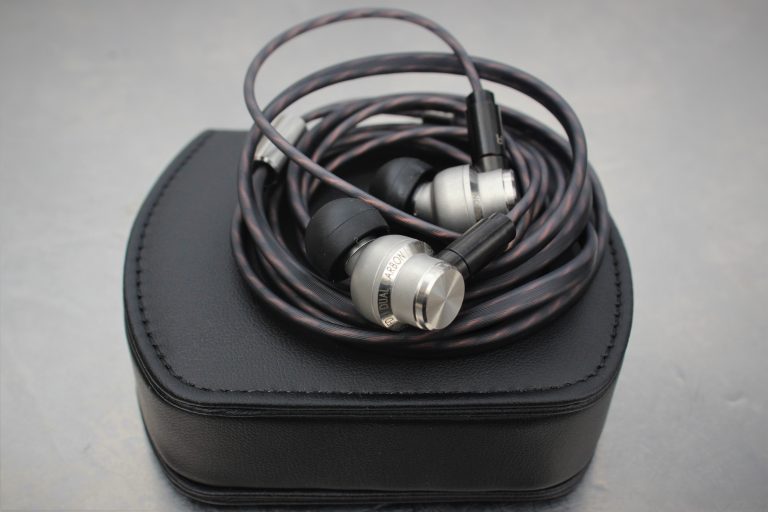
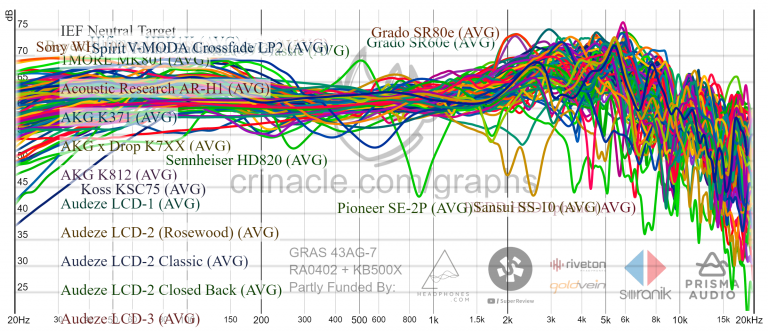
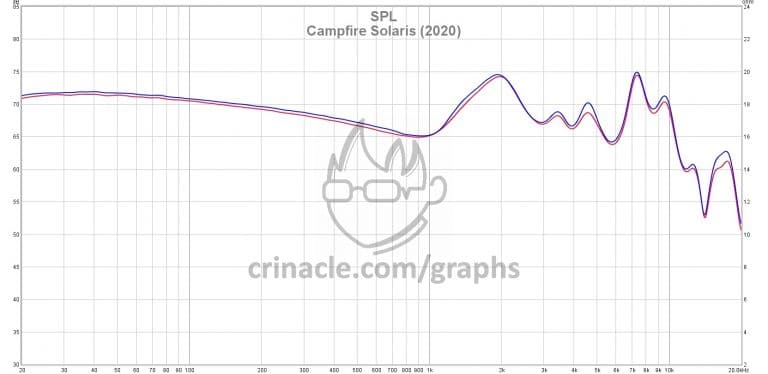
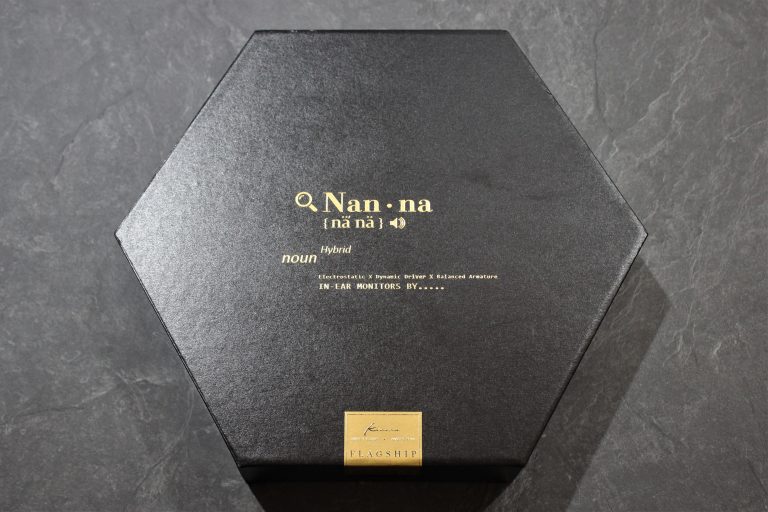

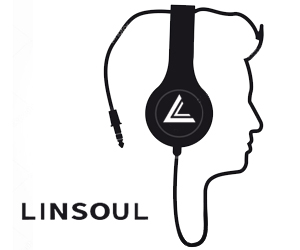
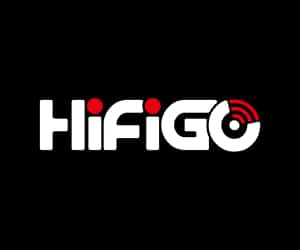
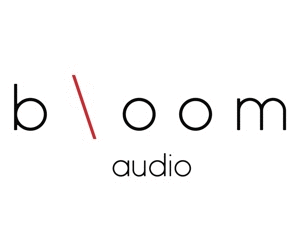
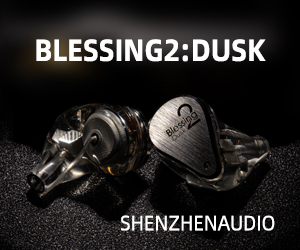
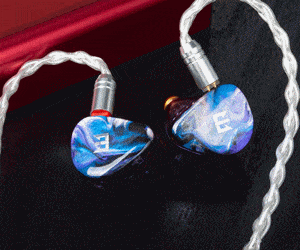

22 thoughts on “The Tracks of an Audio Critic: A Personal Musical Journey”
Hey thanks for helping me discover that “Korean Funk”, really nice to listen to and groovy!
That might be why we never seem to agree. We listen to different music. I still love your graphs tho!
Literally he said the same thing. That should not be the reason to judge the gear and differing opinions.
What a journey! It’s nice to find that you’re into jazz, soul and such. I like BGM too. Would think you were into some classic, I appreciate it a lot lately.
If you are in the mood to hear a very well executed guitar playing with something of jazz and classical to it, there’s this. At 6:45 there’s a phenomenal song I just found today.
Music is something special.
https://youtu.be/NGzBwkCg2TE
My first thought upon getting to the BGM section: “I wonder if Ace Attorney is gonna be here.”
Reading you practically echo my own sentiments regarding the series’ music was satisfying enough that I involuntarily did a fist pump. =)) Making particular mention of the “Meets Jazz Soul” version of Godot’s theme was an especially nice touch.
+1 to this. And great read overall. Always nice to remember that music and its enjoyment are, or should be, front and center for any audiophile.
Seein you have some liking in DJ Max Technica, I have grown fond of songs in the similar rythmic music game named Cytus. They have quite range of songs in it too and I find em quite enjoyable to listen even when you’re not playing the game.
have you checked out binaural recordings? I think they are the songs of the future. You can check out binaulab on youtube for the ones I really like. I highly recommend “Hotel California” and “Bohemian Rhapsody” on that channel.
You just need to wear pretty neutral headphones for them (prefer IEMs, since headphones create ear resonance that already exist in the recording). That’s all you need for amazing realistic sound. I predict binaural recordings will make many headphones obsolete, in favor of neutral headphones compatible with them.
If you have a good 5.2.1 system at home, you should really try Dolby Atmos for music. The only service really leveraging this new audio format is TIDAL at the moment, and you need a receiver that can decode the signal. I recommend the Nvidia Shield 2019 for generating/decoding the signal, though you can enable pass-through on many other media boxes and let the receiver do the heavy lifting. Also, ensuring you have the right speakers for the job is very important though, otherwise it will just sound like a 5.1 system…
The main point here is that Atmos Music is the REAL future. The songs on TIDAL’s service are mastered with Atmos in mind, ensuring that the end-result isn’t just another gimmick, but a whole new way to experience the music. The library is very small at the moment, and it has some rather unusual songs in it, but there are a few good reference tracks there to really understand just what to expect once it gains more traction.
InB4 I get told this is a headphone website: With more and more TWS IEMs gaining 3D audio support, I would wager that once Dolby Atmos hits the mainstream, the lack of an effective 3D audio engine will be a huge turn-off for a lot of people, in the same way ANC is right now.
“Now, back to our regularly scheduled audiophillic pedantry.” This is why I love Crinacle!!
Beautiful!
September sounds so much better then December on headphones. December sounds so lifeless in comparison. Just my opinion.
I absolutely respect your musical tastes, but it’s clear you will be giving more importance to some parts of the sound than others depending on the type of music you prefer.
I’m an unapologetical bass-head, but I’m also an audiophile in the sense that I’m on a quest to find some IEMs that would give me the bass that my Beats Tour 2.0 give me but without all the muddiness in the rest of the frequencies and with less listening fatigue. (Don’t dismiss the Tour 2.0 for being Beats. They’re actually pretty good for their price and age.)
You wouldn’t believe how HARD it is to find good advice for my case (even though it should be pretty common, given the popularity of bass in the mainstream public):
Bass-head sites will direct me to earphones that will blast my brain out but are muddy and technically lacking, and then audiophile sites will direct me to earphones that are ultra technical and precise for bright audio listening (which is nice) but that will lack the amount of bass that I desperately need to truly feel my music (which is a deal breaker).
A well controlled technical bass is not enough for a bass-head.
We need our brains to feel the shockwave to truly enjoy it BUT still get great audio technicality on the rest of the spectrum.
Listening to RnB or HipHop will not cut it for this.
You need to listen to EDM, Trance, PsyTrance, Space Music from the 70s, Synthesizer Greatest’s from the 90s… the kind of synthesizer music that will use ALL the audio spectrum at once. (I LOVE Hotel California btw, don’t let my love for electronic music foul you)
I have been reading about the THIEAUDIO MONARCH lately, and thought it could fit my needs (and my budget lol) but it’s still a deep investment for me and where I live I can’t test expensive earphones.
Any advice from fellow audiophiles will be greatly appreciated. 🙂
Try something like the FIIL T1 pro or T1 lite
They have the bass yet they are fairly balanced and clear.
Go for the “neutral” AKGs. They are just on Harman target (doh!) and it’s plenty of bass. I can appreciate a neutral reference and use a HD560s on a daily basis, but I keep reaching an AKG (N700NC, wireless) for truly enjoying music. It’s the right spot for bass for me, just on sub-bass, no masking of the rest of the spectrum
Hey Crin, have you checked out any music by Khalil Fong? I would say he influenced the K hip hop scene a lot in the early days and has collaborated with Zion T and Crush etc.
You might like some of his stuff, just listen to the Soulboy Collection for a good introduction to some of his best songs
I am Korean. if you have interest in Seethru, I recommend to see:
https://www.youtube.com/watch?v=VfoIREwkDX8
another cover version of Seethru in Korean Tv show, sung by Ali? or Alee? whatever.
알리 in Korean.
I like how you talked about the changing demographics of who is on radio. I need to get a streaming service who has artist interviews. I want to hear from the perspectives of artists that I listened to growing up.
I LOVE YOU!!! THAT KOREAN HIPHOP PLAYLIST IS AMAZING!!!! thank you so much crinacle 😀
If you ever feel like listening to modernified disco, I’d suggest Yung Bae and Saint Pepsi. Something that comes close is also Dabeull
This was a fun journey through time and a universe so different from my own.
Check out Scaruffi’s album rankings
https://scaruffi.com/music/best100.html